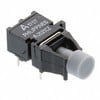Traffic growth in the backbone of today’s networks has certainly slowed, but most analysts still estimate that the traffic volume of the Internet is roughly doubling every year. Every day, more customers sign up for broadband access using either cable modem or DSL. Third-generation wireless is expected to significantly increase the bandwidth associated with mobile communications. Major movie studios are signing agreements that point toward video-on-demand over broadband networks. The only technology that can meet this onslaught of demand for bandwidth in the network core is optical.
Nevertheless, most people still visualize electrical signals when they think of voice and data communications, but the truth is that the underlying transport of the majority of signals in today’s networks is optical. The use of optical technologies is increasing every day because it is the only way in which communications carriers can scale their networks to meet the onslaught in demand affordably. A single strand of fiber can carry more than a terabit per second of information. Optical switches consume a small fraction of the space and power that is required for electrical switches. Advances in optical technology are taking place at almost double the rate predicted by Moore’s law.
Optical networking technologies over the past two decades have been reshaping all telecom infrastructure networks around the world. As network bandwidth requirements increase, optical communication and networking technologies have been moving from their telecom origin into the enterprise. For example, in data centers today, all storage area networking is based on fiber interconnects with speeds ranging from 1 to 10 Gbps. As the transmission bandwidth requirements increase and the costs of the emerging optical technologies become more economical, the adoption and acceptance of these optical interconnects within enterprise networks will increase.
 TABLE OF CONTENTS
TABLE OF CONTENTS 


